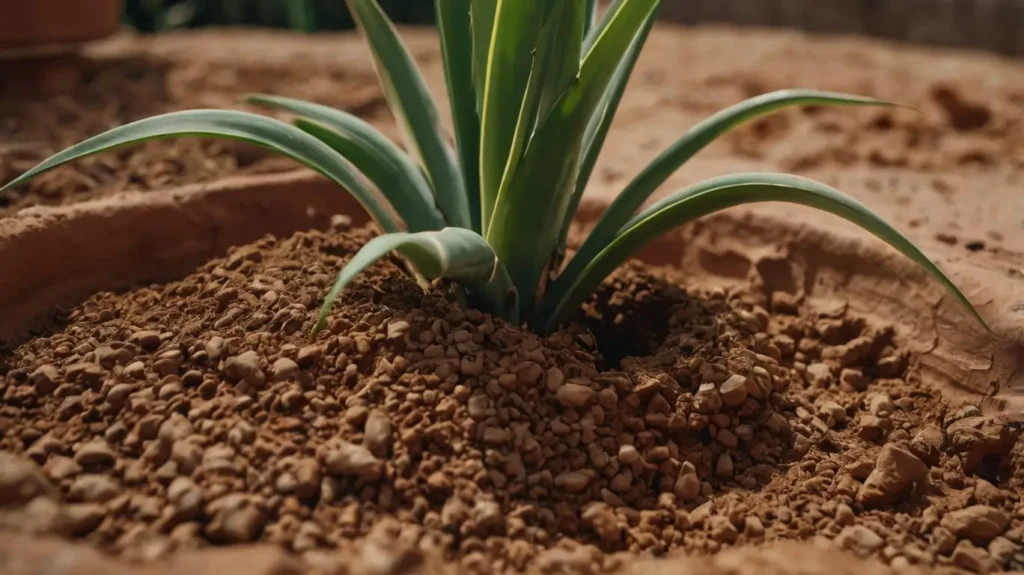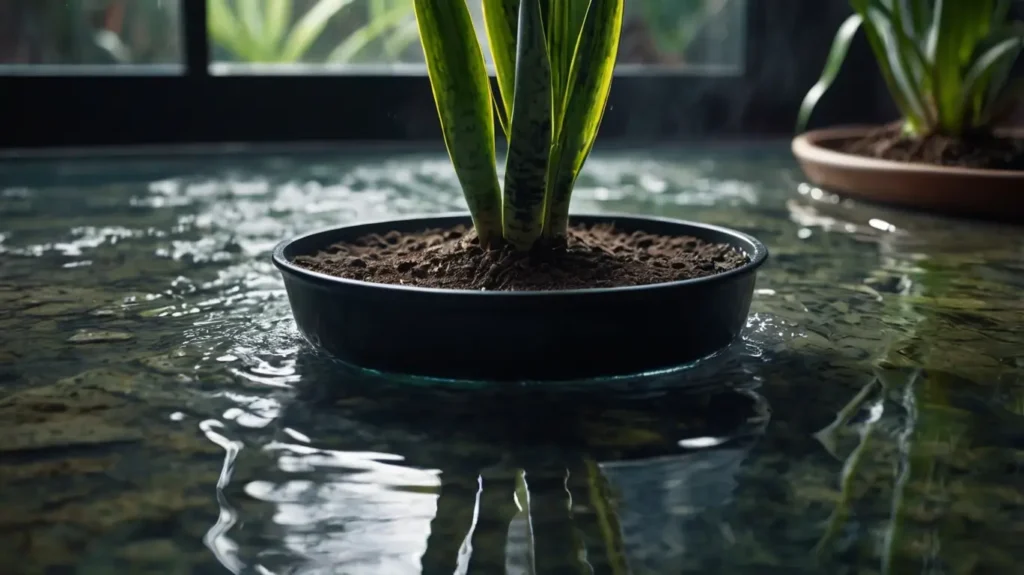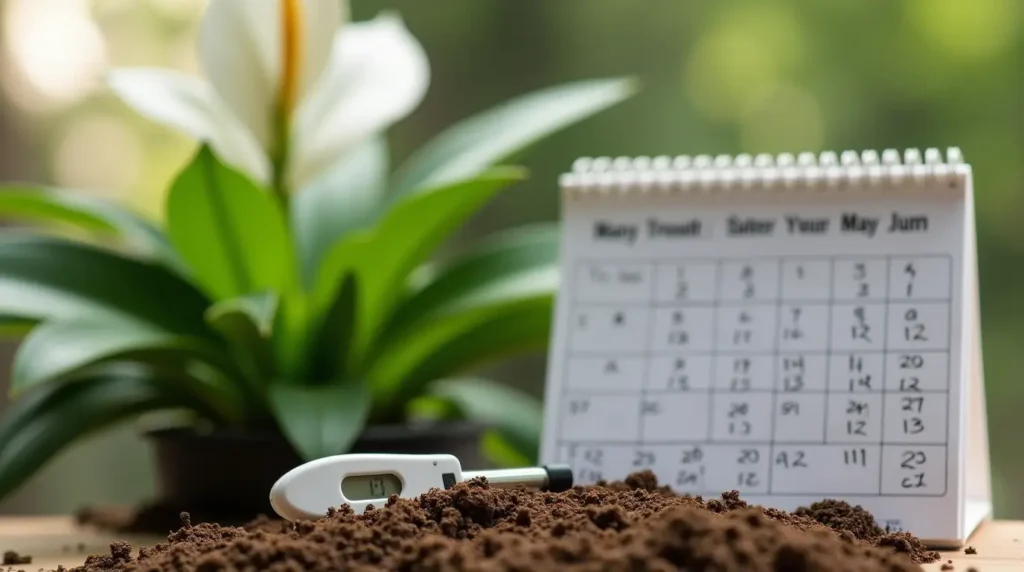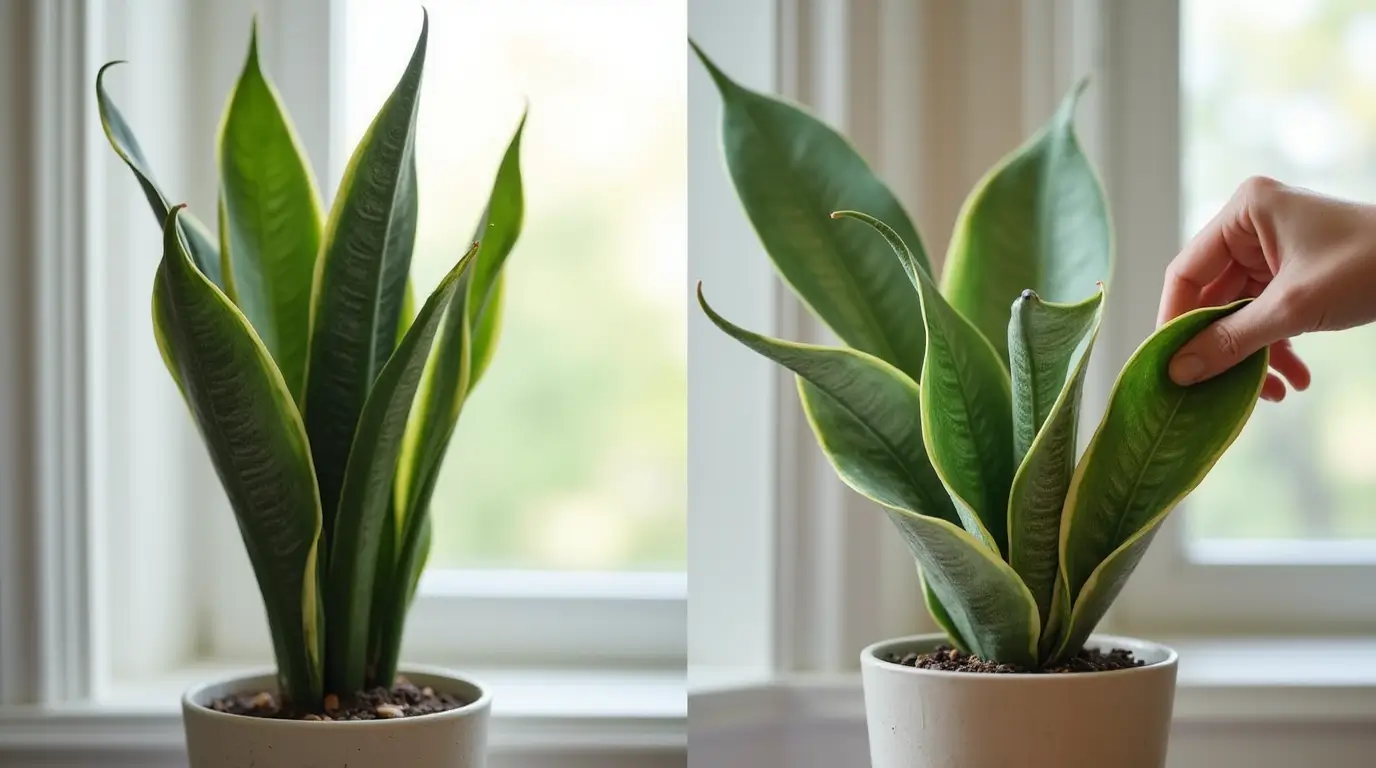Snake Plant Leaves Curling? Proven Ways to Save It!
That moment when you notice your snake plant’s normally rigid leaves starting to curl inward can be downright unsettling.
One day they’re standing tall like proud soldiers, the next they’re folding in on themselves like closed umbrellas. What gives?
Here’s the thing: snake plants (Sansevieria) are some of the toughest houseplants around. They’ll tolerate your forgetful watering habits, survive in dim corners, and generally thrive on neglect.
So when you see snake plant leaves curling, it’s their unmistakable way of saying, “Hey, I need some help here!”
The good news? In most cases, this is completely fixable. Those curled leaves are telling you exactly what’s wrong – you just need to learn how to listen.
Whether it’s a simple watering issue, a lighting problem, or something more serious, we’ll walk through all the potential causes and solutions.
By the time you finish reading this guide, you’ll:
- Understand exactly why snake plant leaves curl
- Know how to diagnose your specific problem
- Have a clear action plan to restore your plant’s health
- Learn how to prevent this from happening again
So let’s roll up our sleeves and get your snake plant back to its gorgeous, upright self. That striking architectural form you fell in love with? It’s absolutely within reach again.
First, we’ll uncover all the possible reasons behind those curling leaves. Then we’ll dive into the step-by-step fixes for each scenario.
And because prevention is always better than cure, we’ll cover how to keep this from happening in the future.
Why Are My Snake Plant Leaves Curling? 7 Common Culprits Explained
Your snake plant’s curled leaves are sending you a message – and we’re here to translate. Let’s examine the seven most likely suspects behind this frustrating issue.
1. Underwatering: The Silent Thief of Moisture

When snake plants don’t get enough water, their leaves curl inward as a survival tactic – like nature’s version of a rolled-up yoga mat. You’ll notice:
- Soil pulling away from pot edges
- Leaves feeling thinner and more flexible
- Curling starting at the tips and moving downward
2. Overwatering: When Too Much Love Backfires
Ironically, snake plant leaves curling can also signal you’re watering too much. These desert natives store water in their leaves, so soggy soil causes:
- Yellowing leaves that feel mushy
- Brown, water-soaked spots near the base
- A musty smell from the soil
3. Low Humidity: The Invisible Leaf Curler
While snake plants tolerate dry air better than most, prolonged low humidity (below 30%) can trigger:
- Lengthwise curling along the leaf edges
- Brown, crispy tips
- Slowed growth despite proper care
4. Poor Drainage: Suffocating the Roots
Even perfect watering can’t compensate for bad soil. Compacted or heavy mixes lead to:
- Water pooling on the soil surface
- Roots that appear brown and slimy
- Leaves curling while soil stays wet
5. Temperature Stress: The Comfort Zone Breach
These tropical plants dislike sudden changes. Watch for:
- Cold drafts causing leaves to curl and droop
- Heat vents leading to rapid moisture loss
- Nighttime temperatures below 50°F (10°C)
6. Pest Infestations: Unwanted Leaf Squatters
Spider mites and thrips are the usual suspects. Telltale signs:
- Fine webbing between leaves (mites)
- Tiny silver streaks on leaves (thrips)
- Stunted new growth
7. Sunburn: When There’s Too Much of a Good Thing
While they love bright light, direct sun can cause:
- Bleached, faded spots
- Leaves curling away from light source
- Crispy brown patches
Symptom Cheat Sheet
| What You See | Most Likely Cause |
|---|---|
| Leaves curling inward like a tube | Underwatering or low humidity |
| Yellow leaves + curling | Overwatering or root rot |
| Brown crispy edges + curling | Too much sun or dry air |
| Fine webs + curling | Spider mite infestation |
| Mushy base + curling | Advanced root rot |
Pro Tip: Often, multiple factors combine to cause curling. Start by addressing the most obvious issue, then monitor for improvements before treating secondary causes.
How to Fix Curling Snake Plant Leaves: A Step-by-Step Rescue Plan
Now that we’ve diagnosed the problem, let’s roll up our sleeves and get your snake plant back to health. Follow these targeted solutions based on your specific issue.
1. Watering Rehabilitation

For Underwatered Plants:
- Give your plant a thorough “bottom watering” session:
- Place the pot in a shallow tray of water
- Let it soak for 30-45 minutes
- Allow complete drainage before returning to its spot
- Going forward, water when the top 2 inches of soil are completely dry
For Overwatered Plants:
- Emergency root triage:
- Gently remove plant from pot
- Trim any black/mushy roots with sterilized scissors
- Repot in fresh cactus/succulent mix with extra perlite
- Hold off watering for 7-10 days after repotting
Pro Tip: Use the “chopstick test” – insert a wooden chopstick into soil; if it comes out clean, it’s time to water.
2. Humidity Boost Strategies
Create the perfect moisture balance without encouraging fungal growth:
- Pebble tray method: Fill a tray with stones and water, place pot on top
- Group therapy: Cluster plants together to create a microclimate
- Smart misting: Lightly spray leaves early in the day (never at night)
Avoid: Placing near AC vents or heaters which create dry air pockets
3. Light Condition Adjustment
Find the Goldilocks zone for lighting:
- Ideal spot: Bright, indirect light (north or east-facing windows)
- Signs of too much sun: Faded leaf coloration or scorch marks
- Low light solution: Rotate plant weekly for even exposure
Did You Know? Snake plants can survive in low light but grow much slower
4. Emergency Repotting Protocol
When soil is the culprit:
- Choose a pot only 1-2 inches larger than the root ball
- Mix your own well-draining soil:
- 2 parts cactus soil
- 1 part perlite
- 1 part coarse sand
- Water lightly after repotting and wait a week before normal care
5. Pest Elimination Tactics
For spider mites or other invaders:
- Immediate isolation from other plants
- Neem oil treatment:
- Mix 1 tsp neem oil with 1 quart water + few drops dish soap
- Wipe both leaf surfaces every 5-7 days for 3 weeks
- Systemic prevention: Apply insecticidal soap as directed
Quick Action Checklist
☑️ Watering: Established a proper schedule based on soil dryness
☑️ Environment: Optimized light and humidity conditions
☑️ Root Health: Addressed any drainage or soil issues
☑️ Pest Control: Implemented treatment and prevention
☑️ Monitoring: Set weekly check-ins to track progress
Remember: Most snake plants show improvement within 2-3 weeks of corrected care. Be patient – those sturdy leaves didn’t curl overnight, and they’ll need time to recover their proper form.
How to Prevent Snake Plant Leaves from Curling Again
Once your snake plant has recovered, keep it thriving with these long-term care strategies to prevent future leaf curling.
1. Master the Watering Routine

Snake plants prefer “soak and dry” watering—give them a thorough drink, then let the soil dry completely before watering again.
- Spring/Summer: Water every 2-3 weeks (or when top 2 inches of soil are dry)
- Fall/Winter: Reduce to once a month (they go semi-dormant in cooler months)
- Pro Tip: Use a moisture meter for accuracy, or stick your finger in the soil—if it’s dry up to your second knuckle, it’s time to water.
2. Optimize Light Exposure
While snake plants tolerate low light, they thrive in bright, indirect sunlight.
- Rotate the plant every few weeks to ensure even growth and prevent one-sided curling.
- Avoid harsh direct sun (especially afternoon rays), which can scorch leaves.
- Low-light adjustment: If your space lacks natural light, supplement with a grow light for 6-8 hours daily.
3. Choose the Right Pot & Soil
- Terracotta pots are ideal—they allow roots to breathe and prevent waterlogging.
- Well-draining soil mix: Combine cactus/succulent soil + perlite/pumice (2:1 ratio) for optimal drainage.
- Repot every 2-3 years to refresh soil and check root health.
4. Maintain Stable Temperature & Humidity
- Keep temps between 60-85°F (15-29°C)—avoid cold drafts or sudden temperature swings.
- Humidity tips:
- Group plants together to create a microclimate.
- Use a pebble tray (fill a tray with water and pebbles, place the pot on top).
- If your home is very dry, a small humidifier nearby can help.
5. Regular Health Checks
- Inspect leaves weekly for early signs of pests, discoloration, or curling.
- Wipe leaves occasionally with a damp cloth to remove dust (which can block sunlight absorption).
- Trim damaged leaves at the base with clean scissors to encourage new growth.
By following these preventive measures, your snake plant will stay strong, upright, and curl-free for years to come.
Final Thought: Prevention is easier than rescue—consistent care keeps your snake plant looking its best!
FAQ: Snake Plant Leaves Curling
Q: Can curled leaves uncurl?
A: Yes, if addressed early! Trim severely damaged leaves to redirect energy to healthy new growth.
Q: How long until my snake plant recovers?
A: Most plants bounce back in 2–4 weeks with consistent care (proper watering, light, and pest checks).
Q: Is leaf curling always a problem?
A: Slight curling can be natural, but severe or widespread curling signals stress (e.g., overwatering, pests, or low light).
Final Tip: Act Fast, Stay Consistent
Your snake plant’s curled leaves are a cry for help—but simple tweaks can work wonders. Stay patient, adjust care routines, and you’ll see those sturdy, upright leaves return.
Want More Plant Tips? Follow Us!
🌿 YouTube: Watch detailed plant care tutorials.
📌 Pinterest: Discover stunning plant decor ideas.
🎥 TikTok: Get quick and fun plant hacks.
Join our plant-loving community today!”

